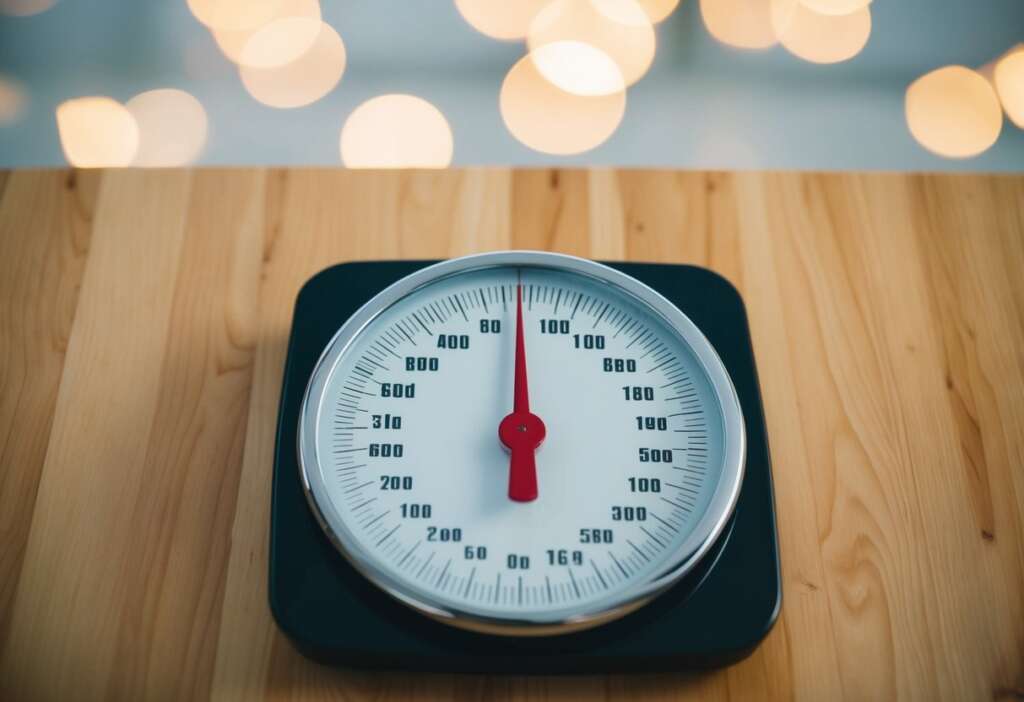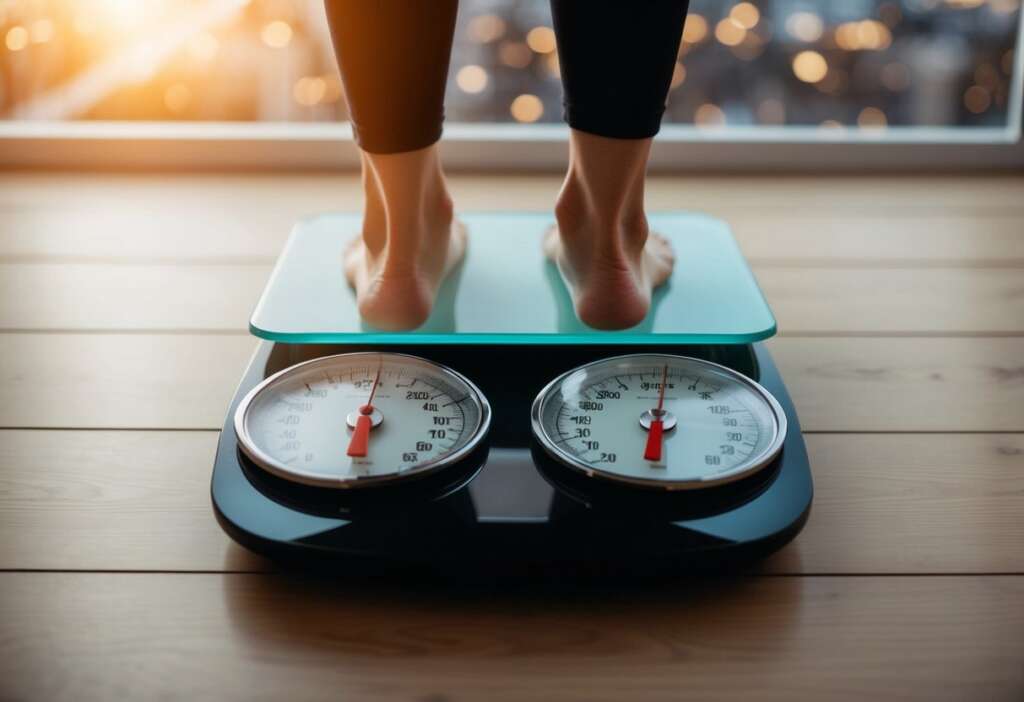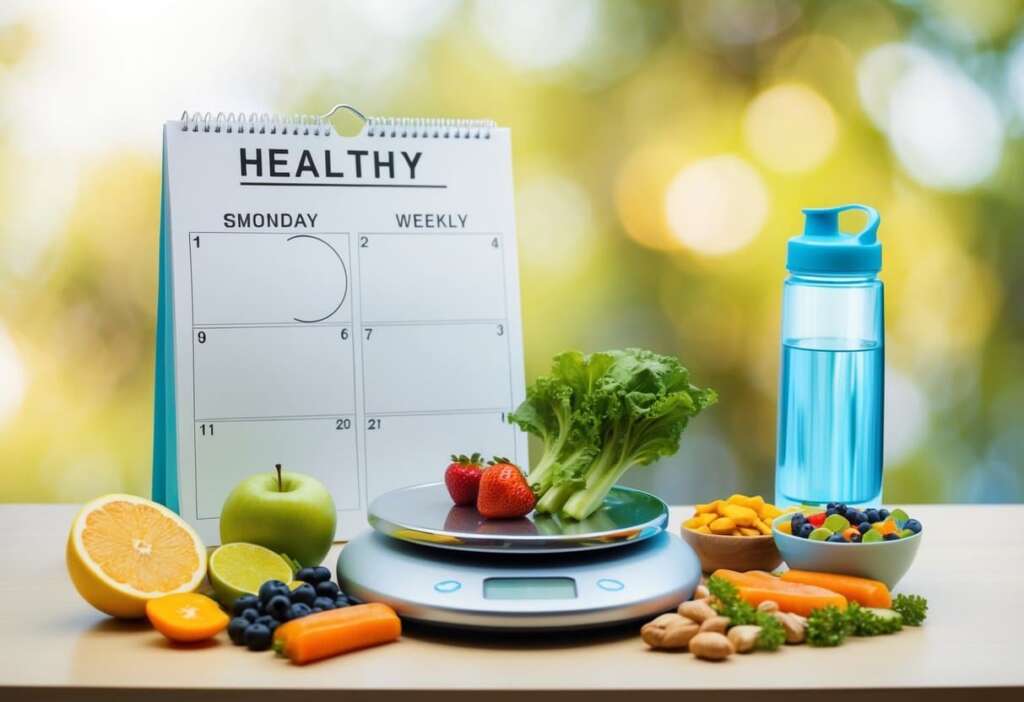So, you want to lose weight in 2 weeks? Losing weight quickly can be tempting, but it’s important to approach it safely. A balanced diet and regular exercise can help you lose 1-2 pounds per week, which is a healthy rate of weight loss. This two-week plan focuses on making sustainable changes to your eating habits and activity levels.

Fast weight loss often leads to quick regain. Instead, aim for gradual changes you can stick with in the long term. This approach helps build healthy habits that last beyond the initial two weeks.
Remember that everyone’s body is different. What works for one person may only work for one person. It’s best to talk to a doctor before starting any new diet or exercise program, especially if you are trying to lose weight quickly.
Key Takeaways
- Aim for 1-2 pounds of weight loss per week through diet and exercise
- Focus on sustainable lifestyle changes rather than quick fixes
- Consult a doctor before starting a new weight loss plan
A Closer Look at Weight Loss
Weight loss happens when the body burns more calories than it takes in. This process involves metabolism, calorie balance, and fat breakdown.
The Role of Metabolism
Metabolism is the way the body turns food into energy. It affects how many calories a person burns each day. Some people have faster metabolisms that burn more calories. Others have slower ones that burn fewer calories.
Exercise can speed up metabolism. Building muscle also helps, as muscle tissue burns more calories than fat. Eating enough protein keeps metabolism high. Lack of sleep can slow it down.
Calories and Caloric Deficit
Calories are units of energy in food. To lose weight, a person needs to create a calorie deficit. This means eating fewer calories than the body uses.
A safe calorie deficit is about 500-750 calories per day. This can lead to 1-2 pounds of weight loss per week. Cutting calories too much can be harmful.
Tracking food intake helps create a calorie deficit. Using a food diary or app makes this easier. Choosing low-calorie, filling foods also helps reduce calorie intake.
The Science of Fat Loss
Fat loss occurs when the body breaks down fat cells for energy. This happens during a calorie deficit. The body turns to fat stores when it doesn’t have enough food energy.
Hormones play a big role in fat loss. Insulin levels drop during calorie restriction. This allows the body to access fat stores more easily. Other hormones like cortisol can make fat loss harder.
Exercise, especially strength training, helps preserve muscle during fat loss. This keeps metabolism high. A mix of cardio and strength training is best for fat loss.
Nutritional Strategies
Good food choices and smart eating habits are key for quick weight loss. A balanced diet with the right portions can help shed pounds fast.
Effective Dieting Techniques
Cut calories by 500-750 per day to lose 1-2 pounds weekly. Eat more protein and fibre to feel full longer. Drink water before meals to curb hunger.
Keep a food diary to track intake. Studies show this helps people eat less. Use a phone app or notebook to log meals and snacks.
Food Choices for Weight Loss
Fill half your plate with veggies at each meal. They’re low in calories but high in nutrients and fibre.
Pick lean proteins like chicken, fish, and beans. These build muscle and burn more calories.
Choose complex carbs like whole grains, sweet potatoes, and quinoa. They give steady energy and keep you full.
Eat healthy fats in small amounts. Try nuts, avocado, and olive oil. These fats help you feel satisfied.
Avoid sugary drinks, junk food, and processed snacks. These are high in empty calories with little nutrition.
Meal Planning and Timing
Plan meals to avoid unhealthy choices. Prep ingredients on weekends for quick weeknight cooking.
Eat 3 main meals and 1-2 small snacks daily. This keeps blood sugar stable and prevents overeating.
Have protein with each meal and snack. It helps build muscle and burn fat.
Eat most calories earlier in the day. A big breakfast and light dinner can aid weight loss.
Try smaller, more frequent meals if it helps control hunger. But watch portion sizes to keep calories in check.
Physical Activity for Weight Loss

Exercise plays a key role in losing weight quickly. Regular workouts burn calories, build muscle, and boost metabolism. A mix of cardio and strength training can maximize fat loss in a short time.
Integrating Cardio and Strength Training
Cardio exercises like walking, jogging, and cycling burn calories fast. Aim for 30-60 minutes of cardio 5-6 days a week. Strength training builds lean muscle, which burns more calories even at rest.
Do weight lifting or bodyweight exercises 2-3 times weekly. Focus on compound moves like squats, push-ups, and lunges. These work multiple muscle groups at once for better results.
Combine cardio and strength in circuit workouts. This keeps the heart rate up while building muscle. A sample circuit: 1 minute each of jumping jacks, push-ups, squats, and mountain climbers. Repeat 3-4 times.
High-Intensity Interval Training (HIIT)
HIIT workouts alternate short bursts of intense exercise with brief rest periods. This style burns more calories in less time than steady-state cardio.
A basic HIIT routine: 30 seconds of sprinting followed by 30 seconds of walking. Repeat for 15-20 minutes. Other HIIT exercises include burpees, jump squats, and high knees.
HIIT boosts metabolism for hours after the workout ends. This leads to more fat burn throughout the day. Start with 2-3 HIIT sessions per week, allowing rest days in between.
Implementing Consistent Exercise Routines
Stick to a regular workout schedule for the best results. Plan exercise sessions in advance and treat them like important appointments.
Try working out at the same time each day to form a habit. Morning workouts can rev up the metabolism for the whole day. Evening sessions can relieve stress and prevent nighttime snacking.
Find activities you enjoy to stay motivated. This might include group fitness classes, sports, or outdoor activities. Having fun makes it easier to stay consistent with exercise.
Track progress to stay on track. Keep a workout log or use a fitness app. Seeing improvements can boost motivation to keep going.
Lifestyle Considerations

Your daily habits play a big role in weight loss. Small changes can make a big difference in reaching your goals.
The Impact of Sleep on Weight Loss
Getting enough sleep helps with weight loss. Aim for 7-9 hours each night. Poor sleep can make you feel hungry and crave unhealthy foods.
Sleep affects hormones that control appetite. When you’re tired, you may eat more. Lack of sleep can also slow down your metabolism.
Try to go to bed and wake up at the same time every day. Create a relaxing bedtime routine. Avoid screens before bed. A dark, cool room helps with good sleep.
Stress Management Techniques
High stress can make it harder to lose weight. It may lead to overeating and poor food choices. Finding ways to relax is key.
Deep breathing is a simple way to reduce stress. Take slow, deep breaths for a few minutes each day. This can calm your mind and body.
Exercise is great for stress relief. A short walk or yoga session can help. Talking to friends or writing in a journal are also good options.
Make time for activities you enjoy. This could be reading, listening to music, or a hobby. Even a few minutes can help lower stress levels.
Importance of Hydration
Drinking enough water is crucial for weight loss. It can help you feel full and eat less. Aim for 8 glasses a day.
Water boosts your metabolism. It helps your body burn calories more efficiently. Choose water instead of sugary drinks to cut extra calories.
Carry a water bottle with you. This makes it easy to drink throughout the day. Add lemon or cucumber for flavour if you don’t like plain water.
Eat foods with high water content. Fruits and veggies like watermelon and cucumbers can help you stay hydrated. They’re also low in calories and filling.
Avoiding Common Pitfalls

Trying to lose weight quickly can lead to mistakes. Let’s look at some traps to avoid and smart choices to make for healthy weight loss.
Resisting Temptation and Overcoming Cravings
Sugar cravings and hunger pangs can derail weight loss efforts. To fight temptation, keep healthy snacks on hand. Cut up veggies or fruit for easy grabbing. Drink water when cravings hit – thirst often masks as hunger.
Avoid buying junk food. If it’s not in the house, it’s harder to eat. Plan meals ahead to stop impulse eating. Eat protein and fibre at each meal to feel full longer.
When cravings strike, try distractions like going for a walk or calling a friend. The urge often passes in 15-20 minutes.
Steering Clear of Quick Fixes
Fad diets promise fast results but rarely work long-term. They often cut out whole food groups, which isn’t healthy. Many lead to quick water weight loss that comes right back.
Avoid diet pills or “fat burners.” These can have risky side effects. Detox teas and cleanses don’t work for real fat loss. They may cause bathroom issues and dehydration.
Crash diets that drop calorie intake too low can slow metabolism. This makes it harder to lose weight later. Focus on slow, steady changes instead of quick fixes.
Sustainable Practices for Long-Term Success
For lasting weight loss, make small changes you can stick with. Swap soda for water or unsweetened tea. Choose whole grains over white bread and pasta. Fill half your plate with veggies at meals.
Cut back on alcohol, which adds empty calories. Limit processed foods high in sugar and unhealthy fats. Cook more meals at home to control ingredients and portions.
Get enough sleep – lack of rest can increase hunger. Make time for exercise you enjoy, not just what burns the most calories. Find ways to handle stress that don’t involve food.
Monitoring Progress and Adjustments

Tracking weight loss, adjusting habits, and staying motivated are key parts of any weight loss plan. These steps help people stay on track and reach their goals faster.
Tracking Weight Loss
A journal helps track weight loss progress. Write down daily weight, meals, and exercise. This shows patterns and areas for improvement. Take body measurements weekly. Waist, hips, and thighs often shrink before the scale moves.
Use a digital scale for accuracy. Weigh at the same time each day, ideally in the morning after using the bathroom. Expect some daily weight changes due to water and food.
Apps can make tracking easier. Many sync with smart scales and fitness devices. They graph progress over time and calculate trends.
Adjusting Diet and Exercise Regimes
Review the journal often. Look for ways to increase calorie deficit. This could mean eating less or moving more. Small tweaks add up over time.
If weight loss slows, cut 100-200 calories per day. Or add 15-30 minutes of exercise. Don’t drop below 1200 calories for women or 1500 for men without a doctor’s approval.
Try new healthy foods to avoid boredom. Swap in different exercises to challenge muscles. This prevents plateaus and keeps things interesting.
Using Feedback to Stay Motivated
Celebrate every pound lost. Even small wins count. Set mini-goals along the way to the big goal. Reward progress with non-food treats like a massage or new workout gear.
Use pictures to see changes. Take photos weekly in the same outfit and pose. Side-by-side comparisons often show the progress the scale misses.
Share goals with friends or join online groups. Support helps on tough days. Having others to report to increases success rates.
Frequently Asked Questions

Many people want to lose weight quickly. This section answers common questions about fast weight loss methods, safe weight loss amounts, and effective diet and exercise plans for two weeks.
What are effective strategies for losing weight quickly within a two-week time frame?
Cut calories by 500-750 per day. Eat more protein and fibre. Drink lots of water. Do cardio exercises 5-6 days a week. Add strength training 2-3 times weekly. Get enough sleep. Reduce stress. Track food and exercise.
How much weight is it healthy to lose in two weeks?
A safe weight loss is 1-2 pounds per week. This means 2-4 pounds in two weeks. Losing more than that may be unhealthy. It can lead to muscle loss and slow metabolism. Gradual weight loss is more likely to stay off long-term.
What type of exercise regimen can optimize weight loss in two weeks?
Do 150-300 minutes of moderate cardio per week. This could be 30-60 minutes 5 days a week. Good choices are brisk walking, jogging, swimming, or cycling. Add 2-3 strength training sessions. Focus on compound exercises like squats, push-ups, and lunges.
Can a significant amount of belly fat be lost in two weeks, and if so, how?
Spot reduction is not possible. The body loses fat all over when losing weight. To reduce belly fat, focus on overall weight loss. Do full-body exercises. Eat a diet high in protein and fibre. Cut back on sugar and refined carbs. Manage stress levels.
What dietary changes should one implement for maximum weight loss in two weeks?
Eat more protein and fibre. They help me feel full longer. Cut out processed foods and added sugars. Drink water instead of sugary drinks. Fill half the plate with vegetables at each meal. Use smaller plates to control portions. Plan meals to avoid unhealthy choices.
Is it possible to lose 10 pounds within two weeks, and what are the health implications?
Losing 10 pounds in two weeks is not recommended. It’s too fast and can be unsafe. It may lead to muscle loss, nutrient deficiencies, and a slowed metabolism. Rapid weight loss often leads to quick regain. A safer goal is 2-4 pounds in two weeks.

